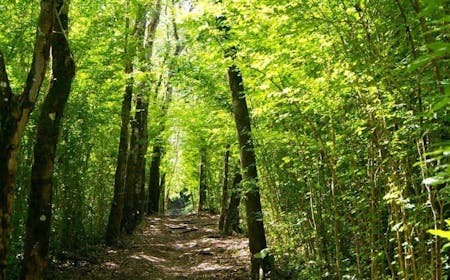
The Gorges de la Falaise
Ajoupa Bouillon is located in the north of the island of Martinique, 40 km from Fort-de-France and to the e...
The Mont Pelee (1379 m / 4583 ft) is a volcano on the island of Martinique which erupted in 1902. It is considered the most commonly active volcano in the Caribbean, sitting at the northern tip of the Lesser Antilles Island of Martinique.
Pelée is the third-highest summit of the Lesser Antilles, barely eclipsed by Guadeloupe's Grande Soufrière and Dominica's Morne Diablotin. Martinique's observatory on volcanology and seismology to this day keep a close watch on the activity of the Pelee moutain volcano.
The Mont Pelee (1379 m / 4583 ft) is a volcano on the island of Martinique which erupted in 1902. It is considered the most commonly active volcano in the Caribbean, sitting at the northern tip of the Lesser Antilles Island of Martinique.
Pelée is the third-highest summit of the Lesser Antilles, barely eclipsed by Guadeloupe's Grande Soufrière and Dominica's Morne Diablotin. Martinique's observatory on volcanology and seismology to this day keep a close watch on the activity of the Pelee moutain volcano.
It provides some spectacular hiking trails with excellent views for nature-lovers.
A climb up the mountain is a must for visitowxrs to the area, and there are many paths of varying difficulty:
Whichever path you choose, pick a fine morning to climb the slopes of the volcano and of course don't forget to bring plenty of water, a hat, rain gear and a jumper with you. Although the Pelée mountain is unfortunately often shrouded in clouds, hindering the area's visibility, it offers outstanding views over Martinique Volcano and the sea on a clear day. Nature lovers will be enthralled by the awe-inspiring scenery!
Mont Pelee (1379 m / 4583 ft) is a volcano on the island of Martinique which erupted in 1902. It is considered the most commonly active volcano in the Caribbean, sitting at the northern tip of the Lesser Antilles Island of Martinique.
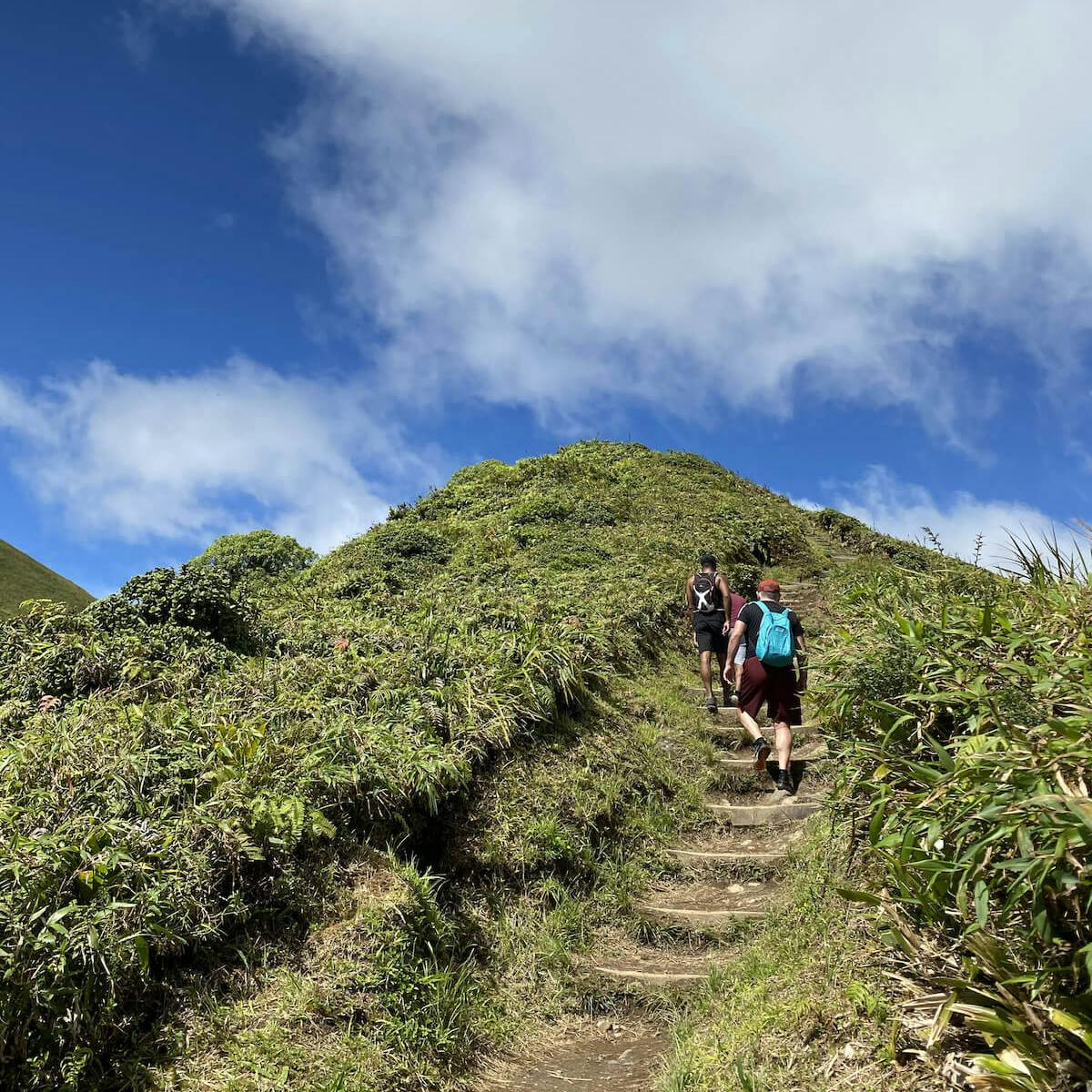
Mt. Pelee erupted on 8 May 1902 causing 30,000 people to lose their lives. This is perhaps the highest volcanic death toll in Martinique’s history. In the 1800s, volcanology was in its initial stages, and the prior volcanic stirrings of 1792,1851 and 1889 were deemed to be of no significance. Sulfurous fumes destroyed birds in February 1902 and explosions rocked the mountain in April of the same year, with the first wave of eruptions engulfing the landscape with lava.
On May 2 the volcano grumbled, and a light was seen at the top showering the landscape with lava. People had fled to St. Pierre to avoid the worst of the debris. A newspaper in Martinique informed people that there was no real risk and even arranged a boat excursion on May 4 to see the volcano.
At 7:50 am on the morning of May 8, as people were going to services for Ascension Day, a black cloud rolled down the volcano at a projected speed of 600 km/hour and engulfed St. Pierre. For a distance of 50 miles, an enormous fire cloud filled the atmosphere. The President, his son, the American Consul, his father, and the British Consul were among the 30,00 people who lost their lives.
The city continued to burn for several days after the eruption. In fact, 18 ships with crew and passengers were lost in the harbor. Just two men survived - a shoemaker and an inmate (Ludgar Sylbaris) who was incarcerated in a poorly ventilated dungeon-like cell on the island. A British ship, with her crew all severely burned, managed to coast back to St. Lucia.
The volcano continued to explode intensely until the end of August and took another 1,000 lives in the village. A tall lava spine was extruded from the 1903 summit which reached 340 m.
The most common route begins from a car park at 830 m (2700 ft) near Le Precheur village on the D39.
Namely, at the "Path de L'Aileron" volcano's western slopes.
It will take approximately 3-5 hours to ascend and descend.
The pavement is well maintained and runs to the summit crater over ancient rocks, cathedrals and andesites.
Both domes of 1902 and 1929 sit within the crater and are composed mostly of andesite blocks. Those arcades are now covered with vegetation.
The peak is the top of the Dome of 1929. Mt. Pelee's top displays no movement, so there is a noticeable absence of steam or Sulphur.
The Aileron trail is the most used, because it is the shortest (2.5 km) and the easiest. It is a rather classic hike from a difficulty point of view. It takes about 4 to 5 hours of walking with between 600 and 700 m of difference in altitude. The departure is from the parking of Aileron at 820 meters of altitude, to reach it you have to drive 2 km after Le Morne Rouge, towards Ajoupa-Bouillon and then take the road of Aileron to the parking.
The first step of the walk is the dome of Aileron at 1107 meters, then the plateau of Palmistes at 1223 meters and finally the site of the Caldeira. We advise you to admire the sunrise from the Palmistes plateau and then continue to the summit accompanied by the first light of the day. The end of the hike is at the Chinois, the Dome which was formed in 1929, at 1364 meters. At the summit, there is not one but two interlocking domes that follow the different eruptions.
The ascent by Grande Savane is less frequented, longer, but surely more interesting for the regulars. The departure is at the end of the road that leads to Grande Savane, above the village of Prêcheur at 650 m of altitude. The hike starts in the jungle and overlooks the Caribbean Sea all the way up.
It will take you about 4 hours of round trip walking to complete this 3.5 km long trail with a 470 meters difference in altitude. Upon arrival at the Caldera, you will enjoy a beautiful view of Saint-Pierre. In addition, you will be able to reach the 3ᵉ refuge and also finish at the Chinois, before heading back down quietly.
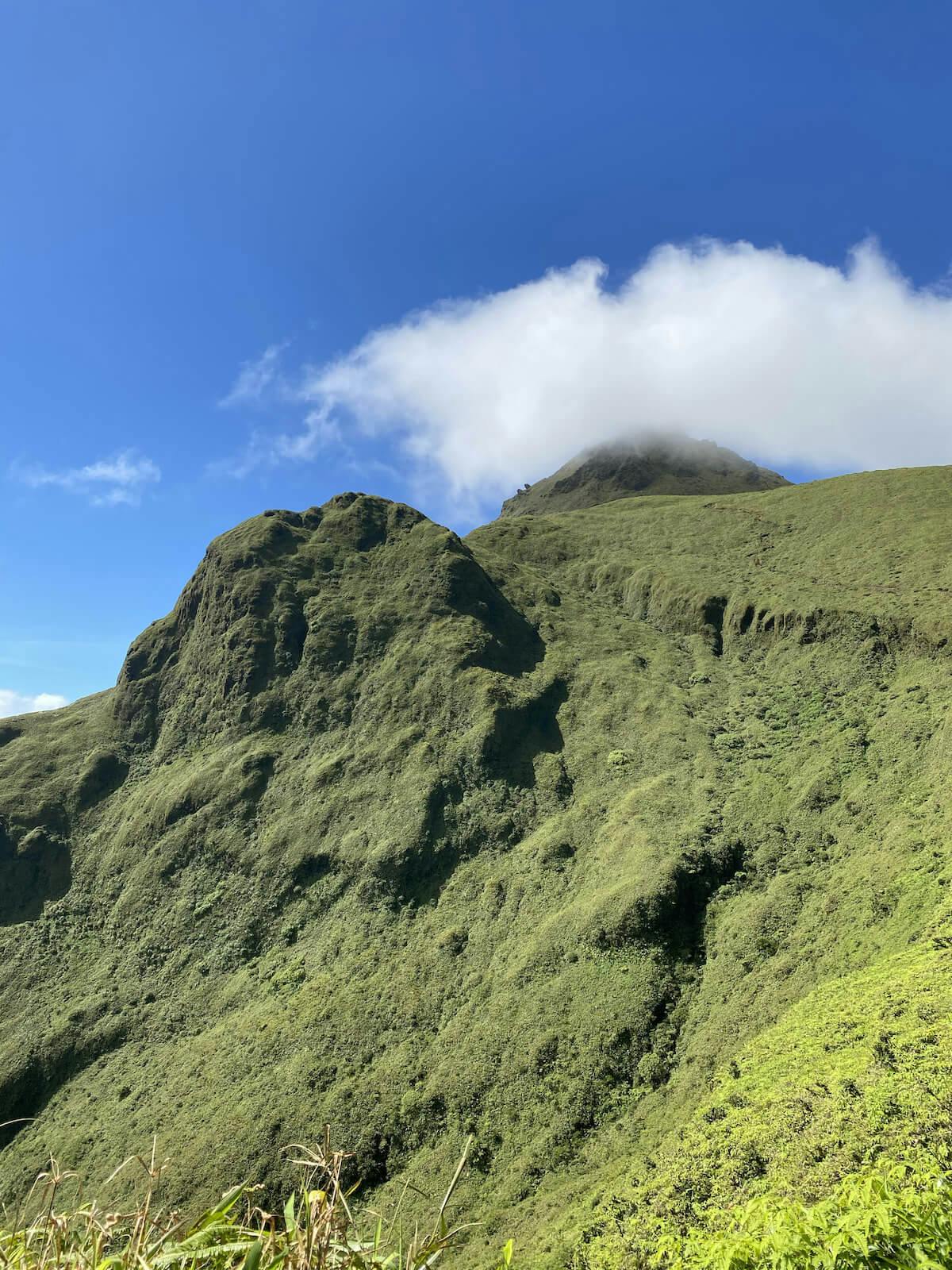
The Grand'Rivière trail is the most technically difficult. There are two possible starting points. For the first option, you must reach the Habitation Beauséjour located in the commune of Grand'Rivière at 100 meters of altitude. This hike is 8 km long and lasts about 9 hours round trip with a difference in altitude of 1300 m. Some passages are quite rough, but the landscapes are worth it. You will take small paths in the middle of sugar cane and banana plantations until the house of the Monk, at 1300 m.
It is of course possible to continue to the Chinois. The second option leaves from the village of Macouba and joins the first trail at the Savane Anatole. The trail is also 8 km long, with a 9-hour walk and a 1220-meter difference in altitude.
Another fascinating walk on the SW side of the volcano is up La Coulee Blanche which begins about 1 km beyond St. Pierre.
In 1902 and 1929, pyroclastic surge crushed this valley and the cliffs became whiter than the natural pumice. You can also bathe in the water until you hit a plunge.
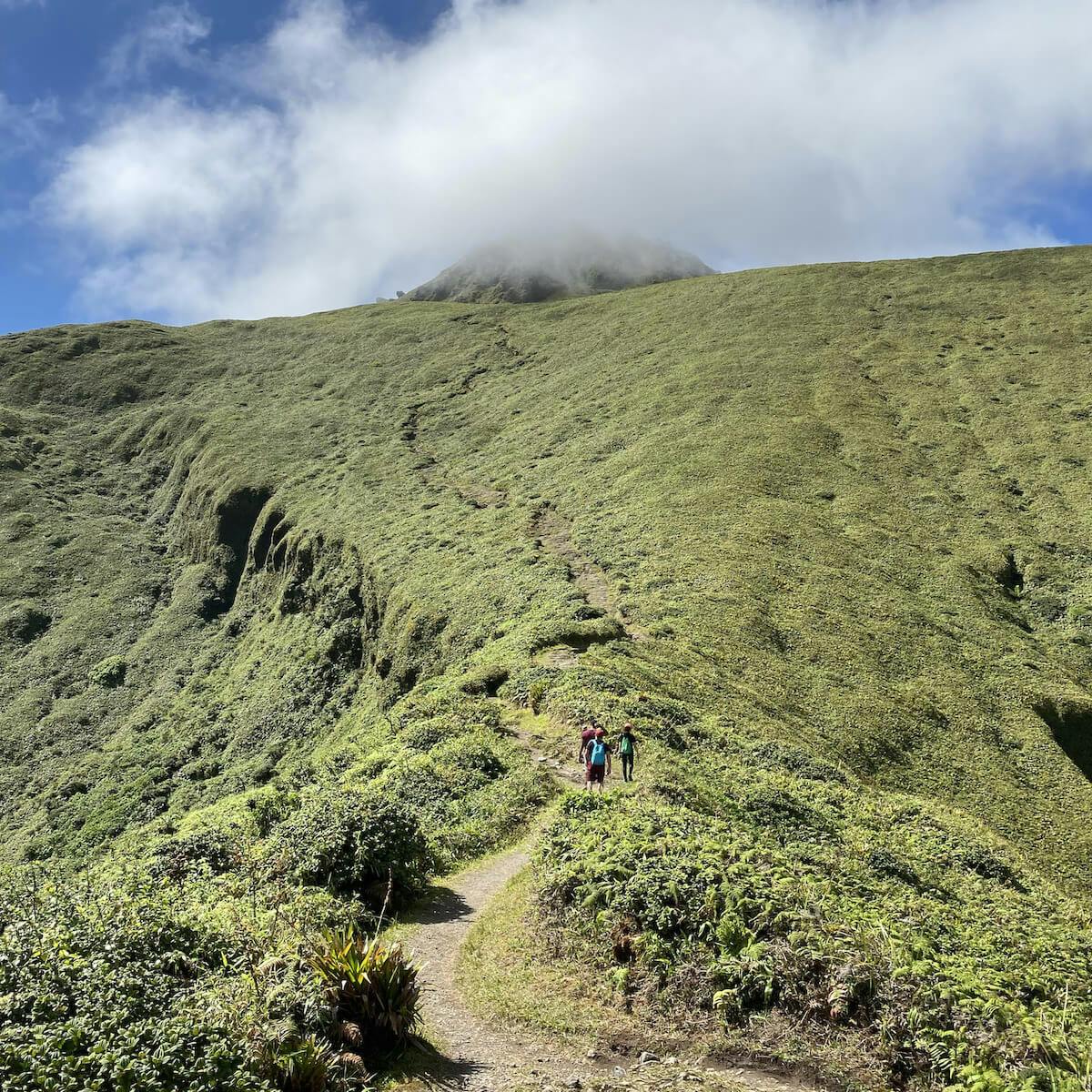
After your Mount Pelee adventure, why not visit Saint-Pierre, whose history is intimately linked to the activity of the volcano? If you are interested in history, visiting Saint-Pierre is a very moving experience. Saint-Pierre, classified as a city of art and history, has risen from its ashes and now relies heavily on tourism to help it recover. After the disaster of 1902, the Martinican, attached to their land, have done everything to rebuild the city and the city now has about 5,000 inhabitants.
You can still see the remains of the Fort church, the old theater, the Cyparis dungeon and much more. So, are you ready for the adventure?
Mount Pelee can be viewed from almost everywhere on the island and can also be climbed. It's entirely possible to go trekking to explore the flora and fauna, and to enjoy the view from the heights. Four marked trails have been built, but to fully enjoy them, it is recommended that you are have a good level of physical fitness, as in certain cases the trails can be deceptive.
Whatever your reason for visiting the beautiful island of Martinique, this place is well worth a trip. So, take a break and explore this mesmerizing, amazing, historically and culturally rich place.
However, if you are still undecided, these 10 reasons to visit Martinique will definetely convince you!

Ajoupa Bouillon is located in the north of the island of Martinique, 40 km from Fort-de-France and to the e...
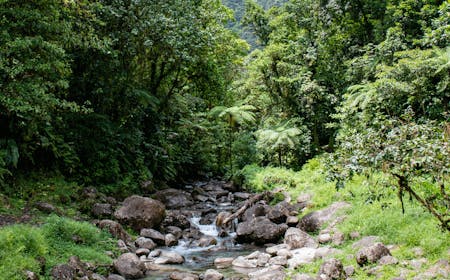
You have decided to go for a ride on the green roads: direction Rivière de l'Alma. It is located on the hei...
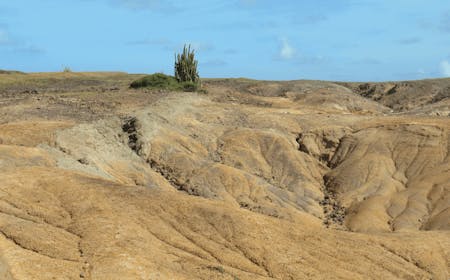
A desert in the middle of the island of flowers! Hard to imagine? Perhaps, but it is no less real. The Sava...